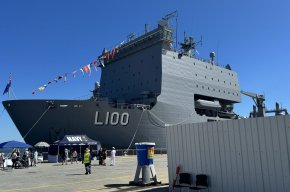StevoJH
The Bunker Group
Ignoring the fact that the UK spends somewhere in the vicinity of twice what Australia does on defence.
What is the use case for a *single* carrier operated by the RAN in our region? A single carrier is not a capability, or at least not an enduring one. Its why the RN bought two. Just look at how much time the MN and Russians have no carrier available as an example.
Don't forget the difficulties of operating aircraft over the modern battlefield against peer or near peer opponents as shown over Ukraine, let alone in the relatively small numbers that a single carrier brings to the party.
Oh wait, I can't ignore the elephant in the room. Money and People.
If you want a fast jet capability at sea, you are talking about a 30-40% increase in the ADF's fast jet fleet. That does NOT come cheap. Then you need the pilots (and possibly even more difficult) the maintainers to support them.
If the RAN decides it needs more airframes at sea, better to do what it is already doing and enhance capabilities already in service. Buy more MH-60R's, its not like there is a shortage of deck spots for them these days.
What is the use case for a *single* carrier operated by the RAN in our region? A single carrier is not a capability, or at least not an enduring one. Its why the RN bought two. Just look at how much time the MN and Russians have no carrier available as an example.
Don't forget the difficulties of operating aircraft over the modern battlefield against peer or near peer opponents as shown over Ukraine, let alone in the relatively small numbers that a single carrier brings to the party.
Oh wait, I can't ignore the elephant in the room. Money and People.
If you want a fast jet capability at sea, you are talking about a 30-40% increase in the ADF's fast jet fleet. That does NOT come cheap. Then you need the pilots (and possibly even more difficult) the maintainers to support them.
If the RAN decides it needs more airframes at sea, better to do what it is already doing and enhance capabilities already in service. Buy more MH-60R's, its not like there is a shortage of deck spots for them these days.

